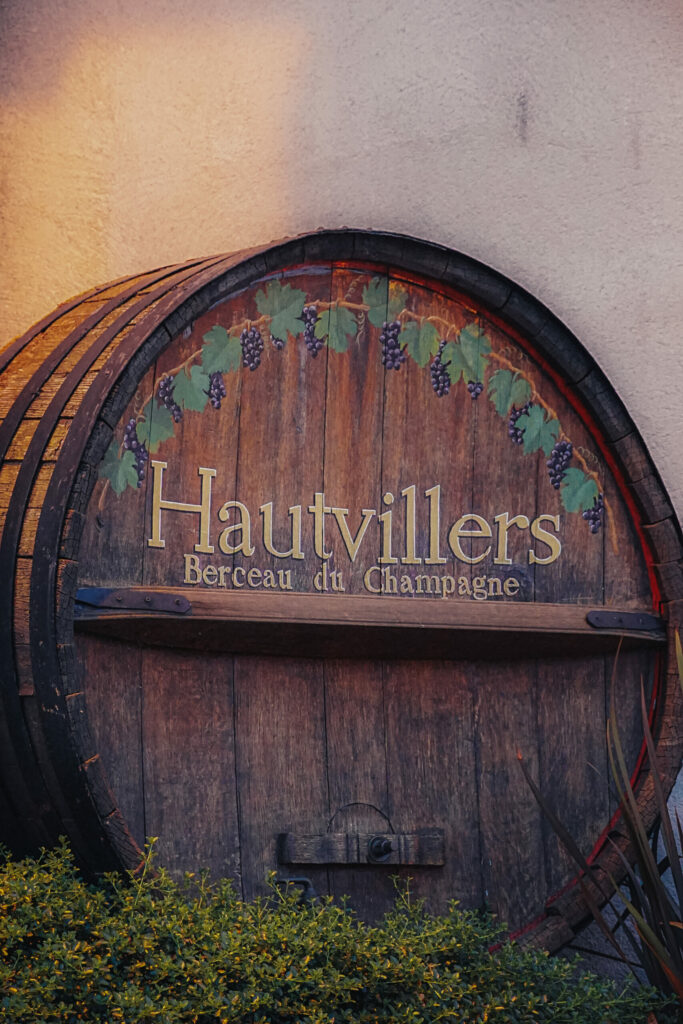The origin of Champagne wine
If today we instantly associate its name with the homonymous sparkling wine, the word Champagne initially designates a region that has only been producing Champagne for a few centuries. Champagne, however, has been a wine-growing region since the Roman Empire and produced prestigious wines, although they were not yet sparkling all the time.
We can in fact think of Clovis, King of the Franks, who chose Champagne wine to celebrate his baptism by the Bishop of Reims in 496. Many other kings of France (33 in total) were later crowned in Reims Cathedral, which helped to maintain the reputation of this wine. Here we don’t know precisely whether Champagne wine was effervescent or not, but what is certain is that there was no method to regulate its effervescence.
The myth of Champagne as a sparkling wine begins with the monk Dom Pérignon, who is said to have discovered how to make wines shine through a fermentation process. If we cannot establish it with certainty (it appears that the wine was already sparkling in the region, and in other vineyards in France depending on the winemaking methods), we can without a doubt state that it had a considerable impact on the development of this wine with golden bubbles.
It was in his abbey of Hautvillers that, like other monks such as Dom Ruinart who also played a notable role, Dom Pérignon perfected Champagne winemaking methods. Over the centuries, winemaking methods have become more precise and the quality of wines has improved.
A quality that today is closely monitored by the Champagne appellation, which imposes geographical and qualitative specifications on producers who wish to benefit from this prestigious mention.
A worldwide success
Once launched, there is no stopping Champagne’s growing success!
Firstly, the 18th century merchants, including Claude Moët and Florens-Louis Heidsieck, who presented Champagne at the court of Versailles to make it known throughout the world.
Then, we have Veuve Clicquot, which exported its champagne to the Russian market and invented rosé champagne, as well as the riddle table with Antoine de Müller. We can also mention the journey of the Widow Pommery who, during the 19th century, strongly participated in the development of Champagne throughout the world through the promotion of her house wines.
Today, personalities such as rapper and businessman Jay Z continue to highlight Champagne houses and thus promote the appellation throughout the world… So much so that today Champagne can also be considered a prestigious wine rather than an ostentatious product, it’s up to you judge!
A festive wine
The history of Champagne is intrinsically linked to ceremonies and celebrations. Over the generations, kings and the French ruling aristocracy have associated champagne as their preferred wine.
It was when Louis Champagne). From that period onwards, Champagne began to be exported across borders and soon conquered all continents, becoming one of the symbols of French luxury.
Due to its fine bubbles, its airy substance and its very light aromas of white fruits, Champagne is one of those wines that can be enjoyed “alone”, therefore, without eating. Therefore, they are more likely to be enjoyed at night and at parties. Its prestige, its refinement and the famous cork that pops when opened are also elements that make it the festive wine par excellence.
Napoleon himself said: “I cannot live without champagne, in case of victory, I deserve it; in case of defeat, I need it.” Like all alcohol, it is comforting in difficult times, but is more joyful in good times.
Combinations with champagne
Champagne is also a wine that goes very well with festive meals, and in particular Christmas meals, as well as New Year’s meals! Depending on the different types of champagne, the food and wine pairings will be different.
A Champagne Blanc de Blancs are usually enjoyed as an aperitif or with dishes that have a beautiful vivacity. We immediately think of a seafood dish, a scallop carpaccio or smoked salmon accompanied by lemon and crème fraîche. On another note, a cheese platter goes very well with a good Blanc de Blancs.
For a Blanc de Noirs, which is more fruity and opulent, you can opt for dishes with a little more character: foie gras, white meat stuffed in the oven like capon with dried fruits or turkey with chestnuts, red fruit tart, etc.
As for rosé Champagne, we find a more powerful and fruity profile, particularly due to the association of Champagne with red wine (blended rosé) or the maceration of black grapes with the skins (bleeding rosé). Therefore, it will be appropriate to combine it with more powerful dishes such as lamb or duck. It will also be welcome for dessert to accompany fruit pies or fruit salads.
Finally, brut champagnes are the most versatile, even though we generally agree to enjoy them as an aperitif or on their own after finishing the meal.
What Pierre (Founder of My Normandy Tour) says
On the Champagne tour, we will visit the most important places about the origin of Champagne wine.
We will visit the abbey of Dom Perignon which was preserved because of Moet and Chandon.
We will also learn about some innovations created in Reims, in the Crayères cellars. An important creation was Rosé by Madame de Ponsardin (The Widow Clicquot)
We will also visit Reims Cathedral. It is always surprising to see how religion influenced Champagne and vice versa.
If you have more time, it would be a pleasure to take a few days itinerary to see and discover more Champagne cellars
Speaking of which, do you know the ideal glass to drink Champagne?


